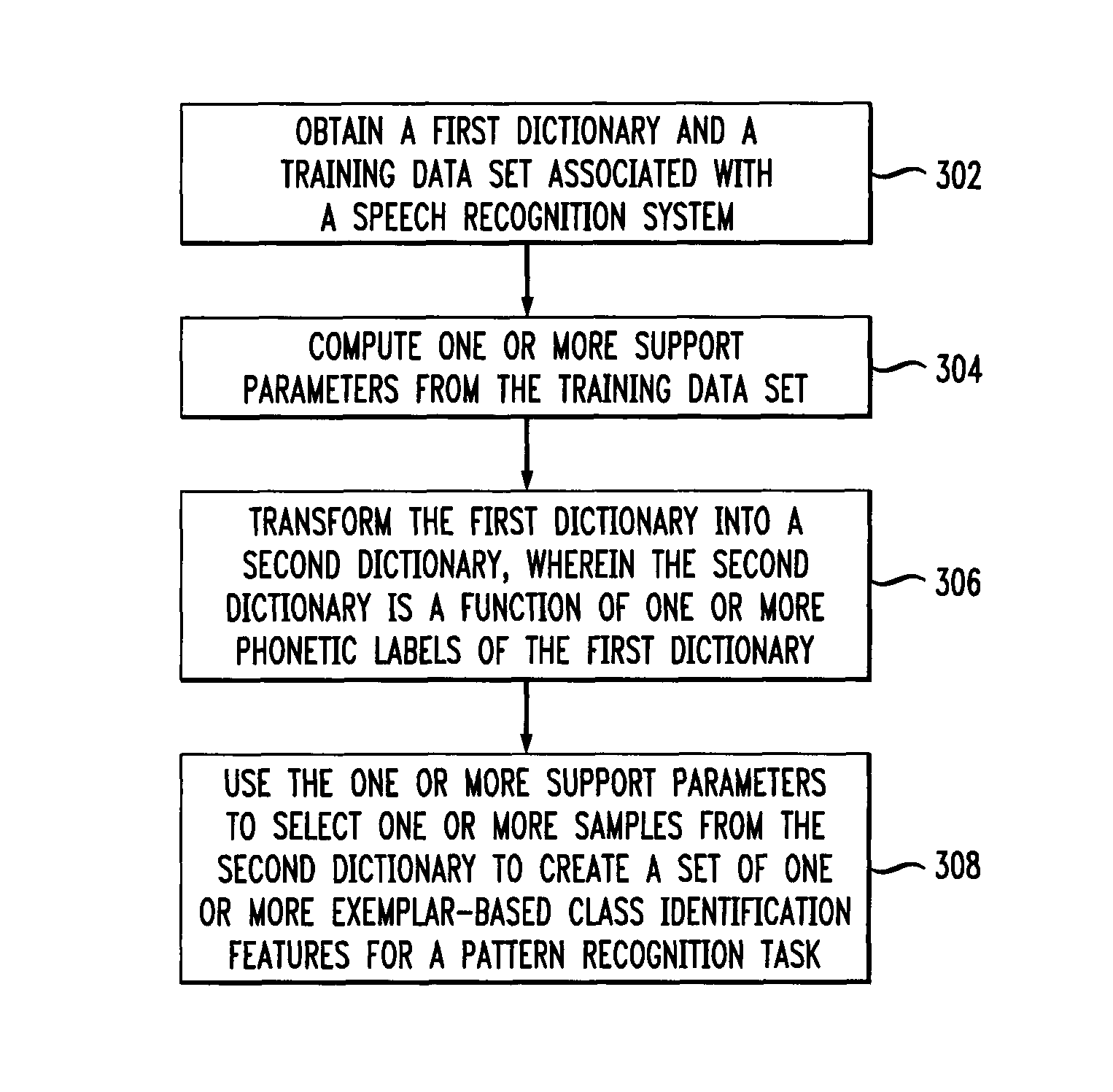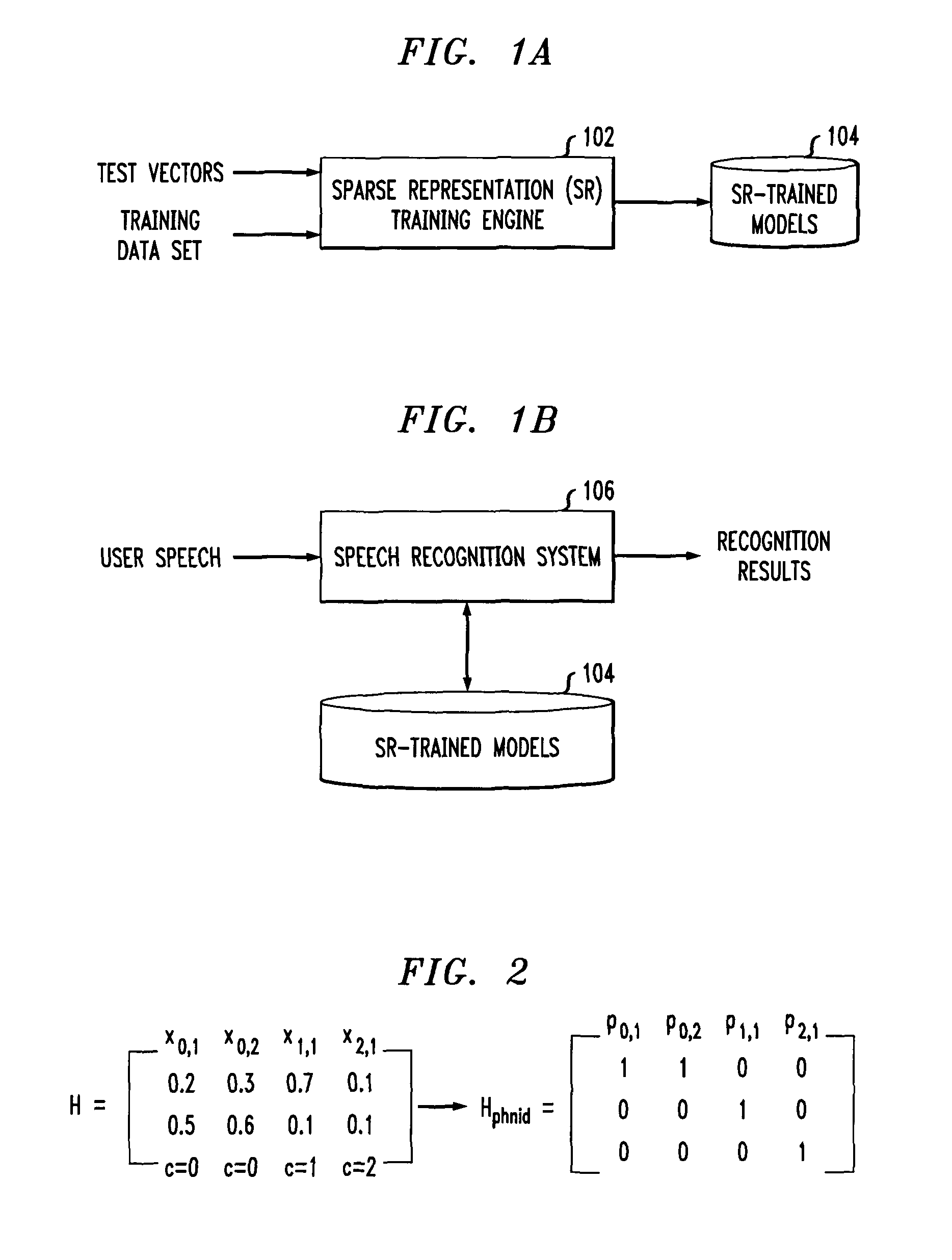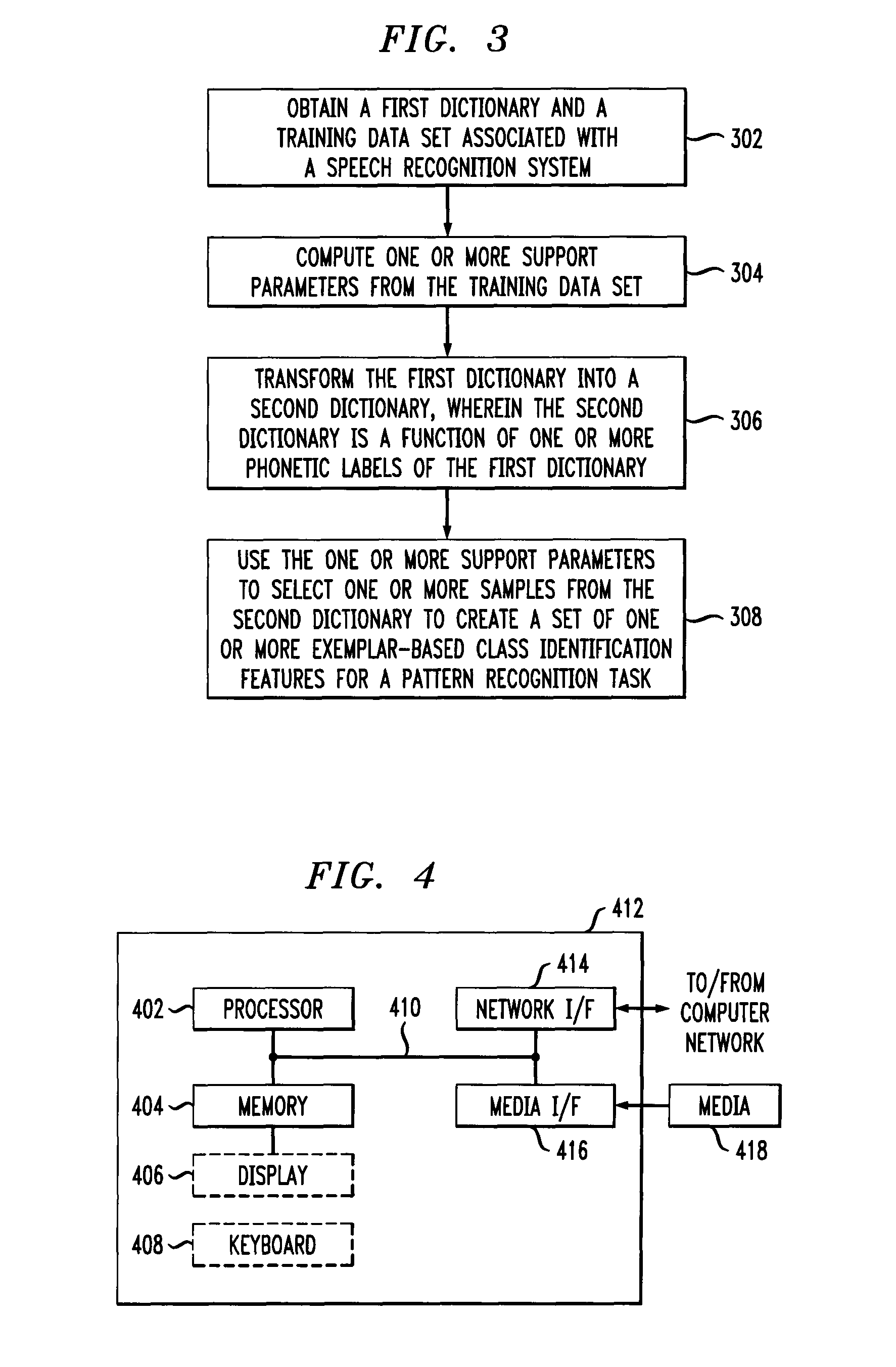Phonetic features for speech recognition
a speech recognition and feature technology, applied in the field of speech recognition, can solve the problems of loss of information that exists within individual training samples, and the difficulty of compressive sensing that is used for a signal reconstruction to apply to speech recognition classification problems
- Summary
- Abstract
- Description
- Claims
- Application Information
AI Technical Summary
Benefits of technology
Problems solved by technology
Method used
Image
Examples
Embodiment Construction
[0014]Principles of the present invention will be described herein in the context of illustrative embodiments of methods, apparatus, articles of manufacture, and systems for providing speech recognition functions. It is to be appreciated, however, that the principles of the present invention are not limited to the specific methods, apparatus, articles of manufacture, and systems illustratively shown and described herein. Rather, the principles of the invention are directed broadly to speech recognition techniques, and more specifically to sparse representation phone identification features for speech recognition. For this reason, numerous modifications can be made to the embodiments shown that are within the scope of the present invention. That is, no limitations with respect to the specific embodiments described herein are intended or should be inferred.
[0015]Referring initially to FIG. 1A, a sparse representation training system is illustrated according to an embodiment of the inv...
PUM
 Login to View More
Login to View More Abstract
Description
Claims
Application Information
 Login to View More
Login to View More - R&D
- Intellectual Property
- Life Sciences
- Materials
- Tech Scout
- Unparalleled Data Quality
- Higher Quality Content
- 60% Fewer Hallucinations
Browse by: Latest US Patents, China's latest patents, Technical Efficacy Thesaurus, Application Domain, Technology Topic, Popular Technical Reports.
© 2025 PatSnap. All rights reserved.Legal|Privacy policy|Modern Slavery Act Transparency Statement|Sitemap|About US| Contact US: help@patsnap.com



